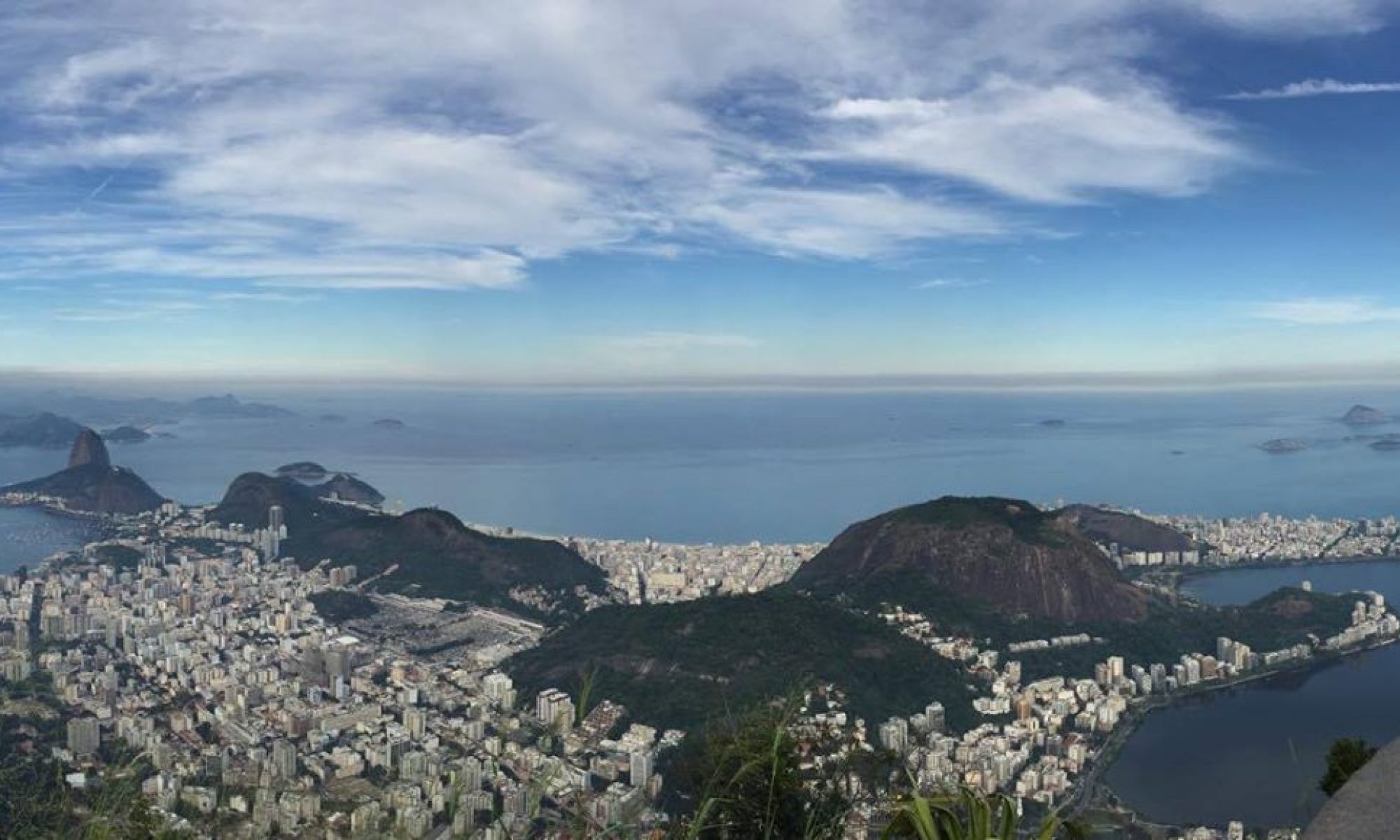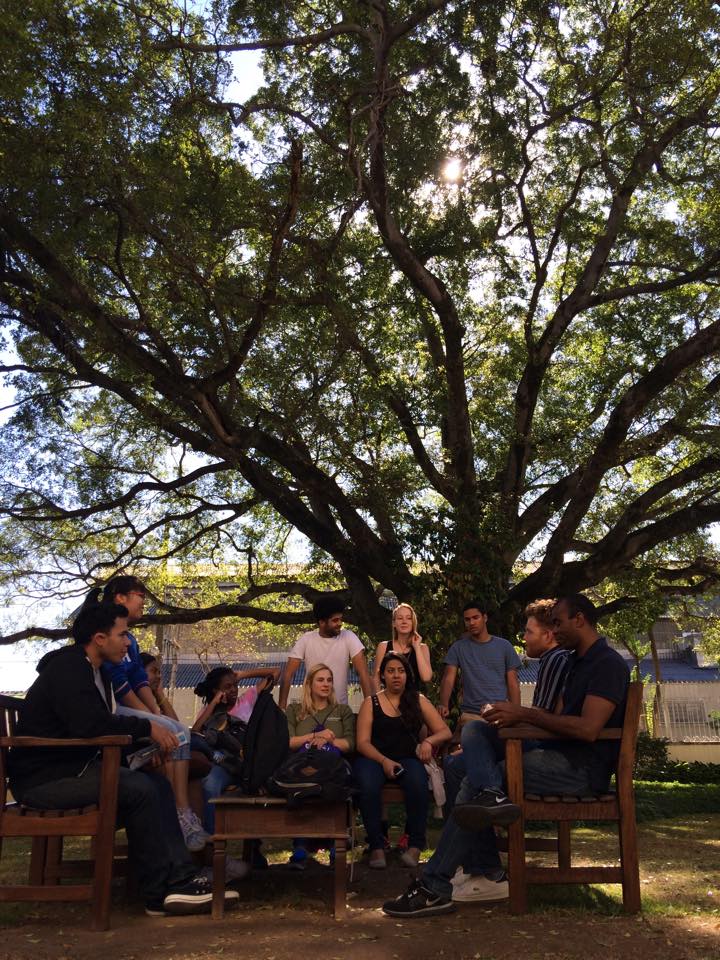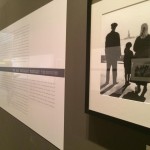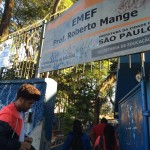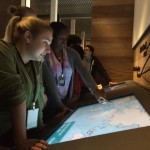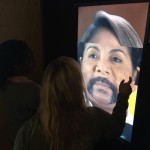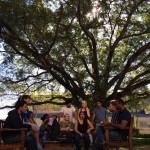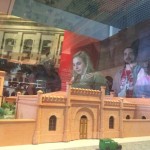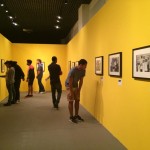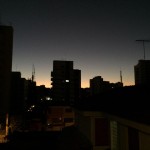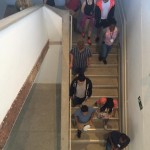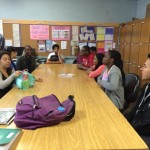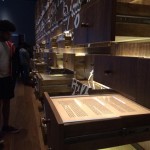June 11, 2015
By: Aleksandra Syniec
We awoke to the sounds of dogs barking, roosters crowing, and our alarm clocks going off in the city of São Paulo. With tired eyes we stumbled out of our hostel at 6:30 a.m. to make it on time for our first activity. After a Metro and bus ride, we arrived in front of the gated middle school, EMEF Professor Roberto Mange, where we went inside to meet some public school students aged thirteen to fourteen. We sat down in a room designated as an auditorium, and before we knew it, the room was filled to the brim with about 40 students. It’s safe to say we were pretty intimidated by these energetic young adults.
A girl shouted across the room at another student, “Favelado!” This is a term that is associated with someone that lives in a Favela. The word “favela” itself is very discriminatory and associated with someone coming from the lower class. We’ve learned from our visits to favelas, that the word “communities” is a word that is more synonymous with the citizens and their homes; whereas the word “favelas” has a negative connotation.
After the professors were able to quiet down the students, Professor Brito introduced himself as a native Brazilian, pointing out to them that he was once in their shoes, and his current status as a professor in the United States. The students roared and a couple of the school’s professors clapped triumphantly. Our professor exemplified success in that moment for these students. Soon it was time for us to make introductions. Shortly thereafter we broke off into smaller groups to answer and ask questions.
Every group shared different and interesting questions with their classrooms; but most of the questions the students asked focused on violence, drugs, and racial prejudice in the United States. The students were interested to see if we dealt with similar problems that they were exposed to. We too asked questions regarding to such topics, including race. When asked what race the students identified with, blank and puzzled expressions emerged. “In Brazil, it is race and racism that people are generally uncomfortable speaking about,” (Goldstein 2013:103). Many probably haven’t considered what race they belong to. On the other hand some were hesitant to identify as black. “Blackness was—and still is—associated with slavery, dirty work, and ugliness,” (Goldstein 2013:107). Hence even fewer identified as black. The students also critiqued the quality of the education they were receiving. One group expressed that they felt like they were not learning anything. This is a common trend in the quality of public schools in Brazil, making the reality of going to a free university almost impossible for public school students because of the difficult entrance exams. Professor Brito revealed that out of the room of 40 students we met, possibly only 5 will continue to university, while half may get some form of employment. The reality of a pedagogy freeing the oppressed looks bleak in such circumstances. Especially since school here is held in three sessions. The students we saw this morning arrived at 7:00 a.m. and then headed home at 11:00 a.m., needing to return to a home life where they know the realities of violence, drugs, teen pregnancies, and prejudice.
After a great game of volleyball and soccer with the students, and many “Don’t leave”, we set out for our second activity of the day, the Immigration Museum. São Paulo amongst many things is known as a destination for immigrants. Our Ellis Island is comparable to São Paulo in terms of flows of immigrants. The large and beautiful building that is the museum is actually only part museum. 70% of the building is used to provide shelter to immigrants today; many of which are from Africa. This support for immigrants in Brazil emphasizes the museum’s message to show that immigration is still very prevalent in Brazil today, not just a history. The tour of the museum started with an artistic interpretation of migration. Our tour guide linked migration to a natural expression of man and freedom. The next part of the museum focused in on the indigenous population of Brazil. Many tribes were located on the coasts of Brazil, but with the incoming Portuguese, many migrated across the country to the Amazon area. The next group of “migrants” who arrived were those from Africa, forced to come as slaves to Brazil. These groups comprise the three main ethnic groups of Brazil: the indigenous, the White European Settlers, and the Enslaved Africans. The last two exhibits we saw were very interactive and exposed immigrants from all over the world that came to Brazil to seek economic growth, political freedom, or a new way of life. As we left the museum, we saw some of the immigrants that also call this museum their home, enforcing the impending struggles of race and class, but this time in the context of immigrants.
